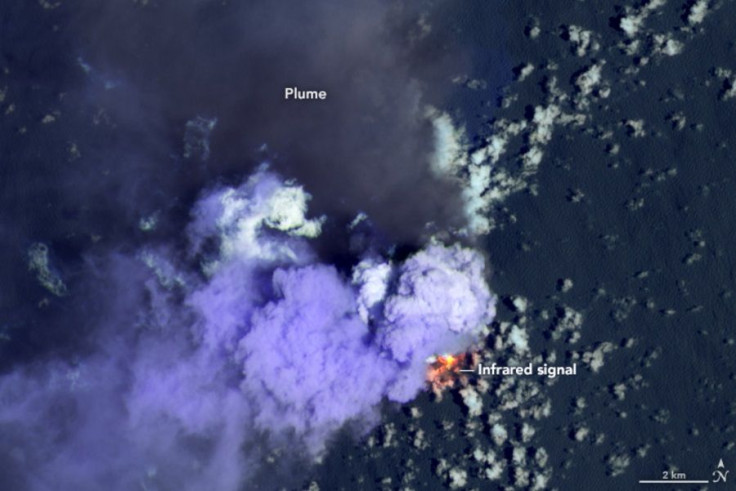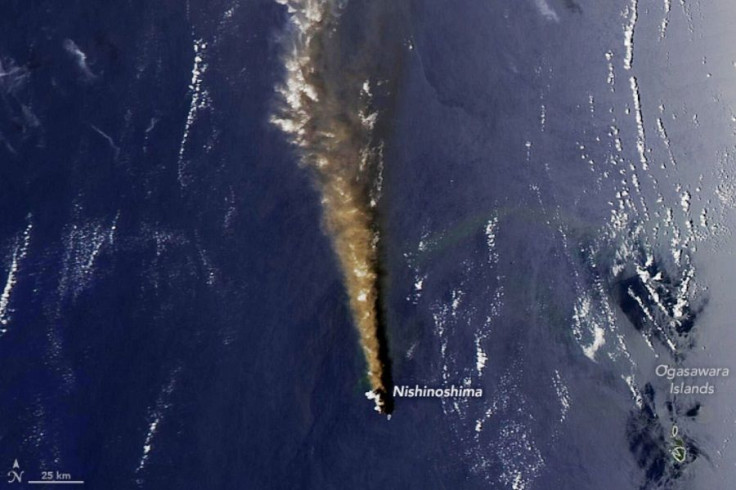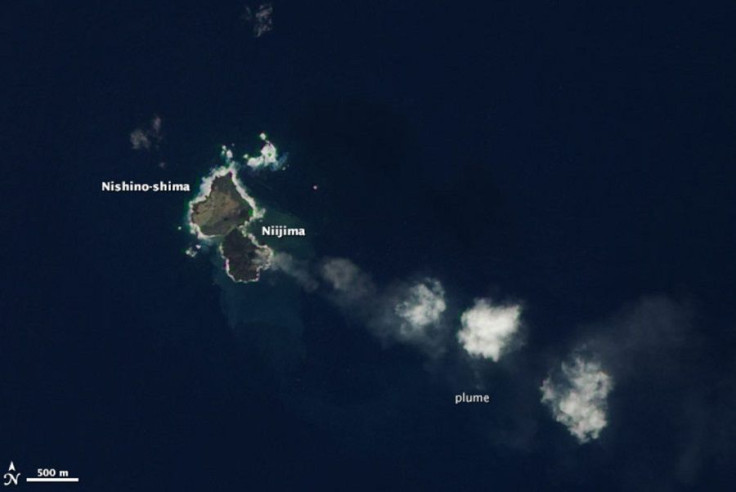NASA Satellites Capture Growing Volcano In The Pacific Spewing Ash And Lava

KEY POINTS
- Satellite images show high volcanic activity in Nishinoshima island in the Pacific
- The images show high ash plumes and thick steam clouds from the volcano
- Nishinoshima island only broke the surface of the ocean in 2013 and it's still growing
Satellite images of the Nishinoshima island in the western Pacific Ocean show the young volcano spewing ash and lava. This is the latest "growth spurt" the volcano has had since it first emerged from the ocean a few years ago.
Nishinoshima is some 600 miles south of Tokyo and is one of the world's most active volcanoes. In late May, the Japan Coast Guard reported that the volcano became even more active compared to the previous months and the hightened activity has persisted in the months that followed.
By July 4, the Japan Meteorological Agency announced that ash from the volcano had been detected at as high as 27,200 feet, which is the highest altitude that a plume has risen from the volcano since it first rose from the water in 2013.
That day NASA and the U.S. Geological Service's Landsat 8 satellite captured the false-color image of the volcano shown below. The dark smoke moving northward in the image is the ash plume rising from the volcano and the light purple clouds the steam, either from the volcano or as a result of the lava hitting the seawater. The yellow and orange infrared signal under the plume and clouds marks the heat signature of the lava.
NASA Earth Observatory shared another image of the volcano, captured two days later by an instrument aboard NASA's Aqua satellite. This time, the dark ash plume and white steam can be seen extending hundreds of kilometers northward.

It was in 2013 when volcanic activity in the Pacific Ring of Fire gave rise to the new island. At the time, the young volcano island was called "Niijima," which means "new land." Although scientists initially thought that Niijima would just sink back into the water, it continued to grow until it eventually merged with another, older island, the Nishinoshima island.

By 2014, Niijima had "consumed” Nishinoshima and the new island that resulted from the merger took the name of the older one.
Nishinoshima is not done growing yet. In fact, according to the NHK, researchers from the Geospatial Information Authority of Japan found that the southern part of the island grew by at least 150 meters between June 19 and July 3 alone.
Because the island sits above large amounts of underground magma, it is said that the activity and lava flow from Nishinoshima will continue.
© Copyright IBTimes 2025. All rights reserved.






















